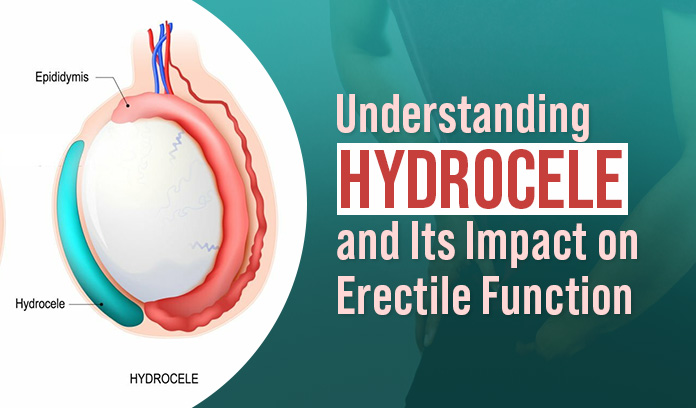Hydrocele, a common condition in men, occurs when fluid accumulates around the testicle, leading to swelling in the scrotum. It is typically a painless enlargement or a feeling of heaviness in the affected area. While hydrocele itself doesn’t directly affect erectile function, in some cases, it may indirectly have an impact on sexual health and performance.
What Causes Hydrocele?
Hydrocele usually occurs due to the imbalance between the production and absorption of fluid in the scrotum. It can result from various reasons, including injury, infection, inflammation, or even as a side effect of other medical conditions. In infants, it may develop due to the incomplete closure of the passage through which the testicles descend into the scrotum before birth.
Symptoms and Diagnosis
Swelling in the scrotum is the primary symptom of Hydrocele. Generally, it’s painless and might vary in size, becoming larger throughout the day and decreasing in size when lying down. Diagnosis of hydrocele involves a physical examination by a qualified healthcare professional, often confirmed through transillumination (shining a light through the scrotum) to identify and distinguish it from other conditions.
Impact on Erectile Function
Hydrocele doesn’t usually affect erectile function. However, in some rare cases, the psychological effects of having a swollen scrotum or concerns about the condition might lead to anxiety or stress which can rise more during sexual activity, potentially affecting sexual performance.
It’s crucial to identify the difference between a hydrocele and other conditions that could affect erectile function, such as hernias or even testicular tumors. Consulting a healthcare professional is essential for proper diagnosis and appropriate management.
Treatment Options
In most cases, hydroceles in infants may disappear without requiring any treatment within the first year of life. However, in adults, if the hydrocele persists or causes discomfort, treatment options may include the following:
- Observation: If the hydrocele is small and causes no discomfort, then a healthcare provider may recommend monitoring it without immediate intervention.
- Aspiration: Draining the fluid from the hydrocele with a needle can provide temporary relief, but it may lead to recurrence.
- Surgery: In some cases, procedures like hydrocelectomy may involve removing the fluid and repairing the underlying cause, preventing recurrence and relieving symptoms.
Seeking medical advice for proper diagnosis and discussing treatment options with a healthcare provider is crucial for managing hydrocele.
Remember, while hydrocele can be concerning, it is a treatable condition, and with appropriate medical guidance, individuals can maintain their sexual health and overall well-being.

